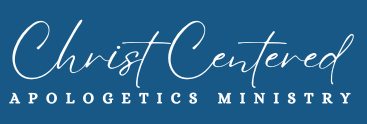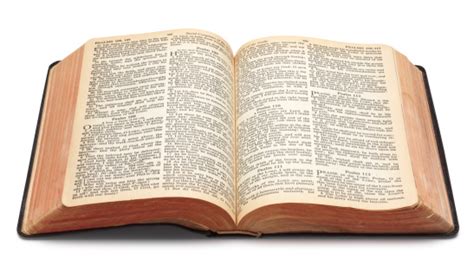Yesterday had the privilege of speaking with Barrie Schwortz for a couple hours, an expert on the Shroud of Turin and one of the few in the world who has physically handled and examined the Shroud. He is a Jew who is convinced (based on the evidence) that the Shroud of Turin is, indeed the actual burial shroud of the historical Jesus of Nazareth.
He brought me up to speed on the latest research, and explained how the 1988 radiocarbon "results" were predetermined, erroneous, politically and economically motivated, and how they've now been debunked.
He was recently on the Glen Beck Show (just last week):
"After 17 years... I had to resign myself to the fact that the most plausible explanation for this is that this is the burial shroud of the historical Jesus of Nazareth."
"You don't have to be a Christian to accept the existence of the historical Jesus and accept that there may be an artifact of [Jesus's life]."
Here's a fuller (video) interview:


The Shroud of Turin is the most important artifact for Christianity and is the most studied artifact in the world. So much so, in fact, that the scientific study of the Shroud is a recognized field of study in itself (*Sindonology*).
Barrie Schwortz runs a non-profit organization called STERA (Shroud of Turin Education and Research Association): https://www.shroud.com/stera.htm
The evidence for the Shroud's authenticity is stronger than I realized:
(1) The preponderance of the evidence is that the Turin Shroud is authentic.
(2) The 1988 radiocarbon results are not representative of the Shroud, and, therefore, provide us with no information about the Shroud's true age.
(3) The results of four other dating methods are consistent with a 1st century origin, and inconsistent with a medieval origin.
(4) An accurate radiocarbon test of the Shroud that employs robust protocols still needs to be done.
Provenance: In addition to the compelling historical case for the Shroud's presence in Jerusalem, Edessa, Constantinople, and Europe (as well as pollen and a rare type of limestone travertine aragonite that locates the Shroud in the Jerusalem area), extensive DNA sequencing and analysis of the many different types of plant and human DNA (halotypes) found in dust and pollen grains on the Shroud are further consistent with the Shroud's presence in the above localities.



Image: The image is not a painting or work of art, and unlike the blood, does not show any evidence of seeping, soaking or liquid capillary flow, but superficially penetrates only a few microns into the 1 or 2 uppermost *fibers* that compose the larger linen threads. The discoloration of fibers that comprise the image is the result of an oxidative, dehydration process that has only affected the outer primary cell wall of the fibers, leaving the internal structure unaffected. The varying intensity of the image results from the density or number of fibers that are discolored in a given area, and not from any change in the color of the fibers themselves (i.e., the discoloration is the same, uniform color throughout).


Image Formation: Scientifically, the mechanism that made the image remains a mystery. It is not a painting, nor is it the result of a scorch or high temperature event, nor is it the result of radiation or a radiation burn. But one thing is for sure: it is NOT a medieval forgery, nor is it human made; which leaves supernatural, or some as of yet, unknown natural process or phenomenon.


Synopsis: With the Turin Shroud we have a linen burial shroud made by technology consistent with first century linen production that enshrouded a human male body bearing anatomically and medically accurate wounds consistent with Roman scourging and crucifixion, and an additional side wound and scalp puncture wounds consistent with the gospel accounts of the crucifixion of Jesus, evidencing a *cap* of thorns (as opposed to the traditional circular *crown/wreath* of thorns).
Evidence of rigor mortis and a lack of any evidence for putrefication (body decomposition) of any kind (commonly seen in other burial cloths) indicates the body was in the Shroud for no more than 40 hours and then removed without causing any disruption (smearing, breakage, distortion, etc.) of the blood stains.
He brought me up to speed on the latest research, and explained how the 1988 radiocarbon "results" were predetermined, erroneous, politically and economically motivated, and how they've now been debunked.
He was recently on the Glen Beck Show (just last week):
"After 17 years... I had to resign myself to the fact that the most plausible explanation for this is that this is the burial shroud of the historical Jesus of Nazareth."
"You don't have to be a Christian to accept the existence of the historical Jesus and accept that there may be an artifact of [Jesus's life]."
Here's a fuller (video) interview:


The Shroud of Turin is the most important artifact for Christianity and is the most studied artifact in the world. So much so, in fact, that the scientific study of the Shroud is a recognized field of study in itself (*Sindonology*).
Barrie Schwortz runs a non-profit organization called STERA (Shroud of Turin Education and Research Association): https://www.shroud.com/stera.htm
The evidence for the Shroud's authenticity is stronger than I realized:
(1) The preponderance of the evidence is that the Turin Shroud is authentic.
(2) The 1988 radiocarbon results are not representative of the Shroud, and, therefore, provide us with no information about the Shroud's true age.
(3) The results of four other dating methods are consistent with a 1st century origin, and inconsistent with a medieval origin.
(4) An accurate radiocarbon test of the Shroud that employs robust protocols still needs to be done.
Provenance: In addition to the compelling historical case for the Shroud's presence in Jerusalem, Edessa, Constantinople, and Europe (as well as pollen and a rare type of limestone travertine aragonite that locates the Shroud in the Jerusalem area), extensive DNA sequencing and analysis of the many different types of plant and human DNA (halotypes) found in dust and pollen grains on the Shroud are further consistent with the Shroud's presence in the above localities.



Image: The image is not a painting or work of art, and unlike the blood, does not show any evidence of seeping, soaking or liquid capillary flow, but superficially penetrates only a few microns into the 1 or 2 uppermost *fibers* that compose the larger linen threads. The discoloration of fibers that comprise the image is the result of an oxidative, dehydration process that has only affected the outer primary cell wall of the fibers, leaving the internal structure unaffected. The varying intensity of the image results from the density or number of fibers that are discolored in a given area, and not from any change in the color of the fibers themselves (i.e., the discoloration is the same, uniform color throughout).


Image Formation: Scientifically, the mechanism that made the image remains a mystery. It is not a painting, nor is it the result of a scorch or high temperature event, nor is it the result of radiation or a radiation burn. But one thing is for sure: it is NOT a medieval forgery, nor is it human made; which leaves supernatural, or some as of yet, unknown natural process or phenomenon.


Synopsis: With the Turin Shroud we have a linen burial shroud made by technology consistent with first century linen production that enshrouded a human male body bearing anatomically and medically accurate wounds consistent with Roman scourging and crucifixion, and an additional side wound and scalp puncture wounds consistent with the gospel accounts of the crucifixion of Jesus, evidencing a *cap* of thorns (as opposed to the traditional circular *crown/wreath* of thorns).
Evidence of rigor mortis and a lack of any evidence for putrefication (body decomposition) of any kind (commonly seen in other burial cloths) indicates the body was in the Shroud for no more than 40 hours and then removed without causing any disruption (smearing, breakage, distortion, etc.) of the blood stains.
Last edited:




















